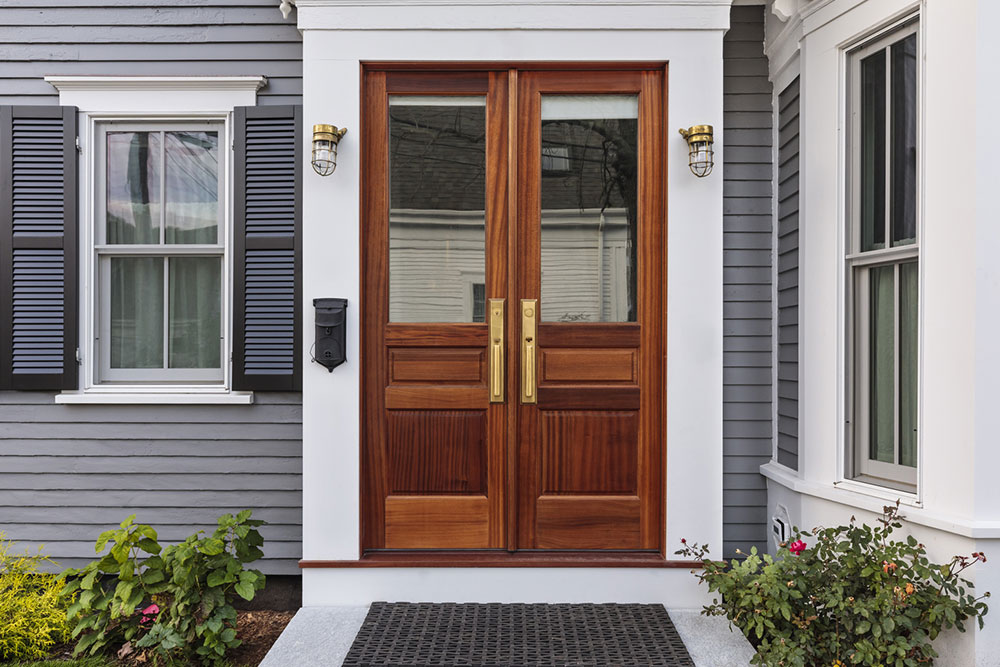8 mistakes to avoid when buying a front door

Home improvement projects can be a lot of fun but also very tiresome and stressful. There are a number of decisions to make and so much information to gather. Even a simple task like choosing the right front door can take a lot of time. If someone is at this stage of the home improvement process, they should research well and ensure that they do not make these rookie mistakes.
Measuring incorrectly
Taking incorrect measurements is among the biggest mistakes one must avoid when finalizing a front door for the house. Before ordering a door online, individuals must check the measurements at least two to three times to be sure. Most retail platforms have a guide that shows people how to measure the door, which is helpful.
Anyone getting a pre-hung door should be extra careful and ensure to measure the rough opening or the opening in the wall before any framing is attached. One should measure from the header at the top of the door to the sub-floor and then from jack stud to jack stud. Also, individuals should measure from three different places: the top, the middle, and the bottom for the jack studs, and the left, the right, and the middle for the header. One should consider the smallest of the three measurements if any variations occur. It is generally said that fixing a slightly smaller door is easier than fixing one that is too large.
Choosing the wrong material
The material affects not only the front door’s appearance but also its durability. Stronger materials are necessary for security and safety reasons. Doors that have MDF or veneers on low-quality insulation are not sturdy and easy to kick down. Experts say one should pick doors with solid wood. Individuals can research how different types of wood work in various weather conditions and choose what best suits their location.
Ignoring the swinging direction
Before picking a front door, one must decide whether it should swing inward or outward because this influences convenience and security. One might have noticed that most entry doors swing inward. This way, the hinges are inside, so strangers cannot tamper with them, which helps prevent mishaps. However, some doors swing outside as well. Individuals may find this design in houses with less pace in the entryway. In this case, the person who does the installation ensures the hinges have a non-removable pin (also called an NRP pin) that does not allow for any interference from the outside.
Ignoring aesthetics
Sure, the front door must be solid and secure, but aesthetics is also crucial. One should not compromise on how the main door looks. The design of the door depends hugely on the house’s theme. Think of the other elements like the windows and wall color. What kind of a door would fit best to complete the look? A door is usually the last thing to be installed after a renovation, so one can take a good look at the rest of the place before deciding. Individuals should make sure the front door complements the theme and fits in nicely.
Focusing solely on the price
Home improvement projects are expensive, so it is natural to look for ways to cut costs. However, one should think before making any decisions. Buying a good, solid door should be a priority because it keeps the family safe and lasts for years! If one opts for a cheaper option, like a builder-grade door, there will be issues like less insulation and early wear and tear of the hinges, which can be problematic and need emergency fixing. So, it is recommended not to compromise on the cost when choosing a front door.
Incorrect installation
A lot of people take home improvement projects into their own hands. And why not? DIYing the project is a great way to know more about how the house is built and a good bonding experience for the family. However, one should install the door themselves only if they have some years of experience and are well-versed in the task. Installing doors needs skill and knowledge, which not everyone might have. If an inexperienced person undertakes the job, they risk making costly mistakes.
Not thinking about maintenance
When finalizing a door, one should think about its future maintenance. Is it easy to take care of, and how much maintenance does it require? Since the front door is the most exposed to the harsh sun, snowy winters, and heavy rainfall, its wear and tear is rather quick. Gradually, the paint job may start to come off, rust could develop at the hinges, and some doors may even puff up due to excess moisture or water exposure. So, one must buy a door that is easy to take care of in the long term.
Forgetting the seal
Sealing the door allows for better insulation and helps keep the house cozy. Some may forget this last crucial step, so it is important to note it down.
Individuals should seek a professional’s assistance to choose the right front door if needed. The expert can help select a material that best suits one’s budget and blends in with the rest of the house.









